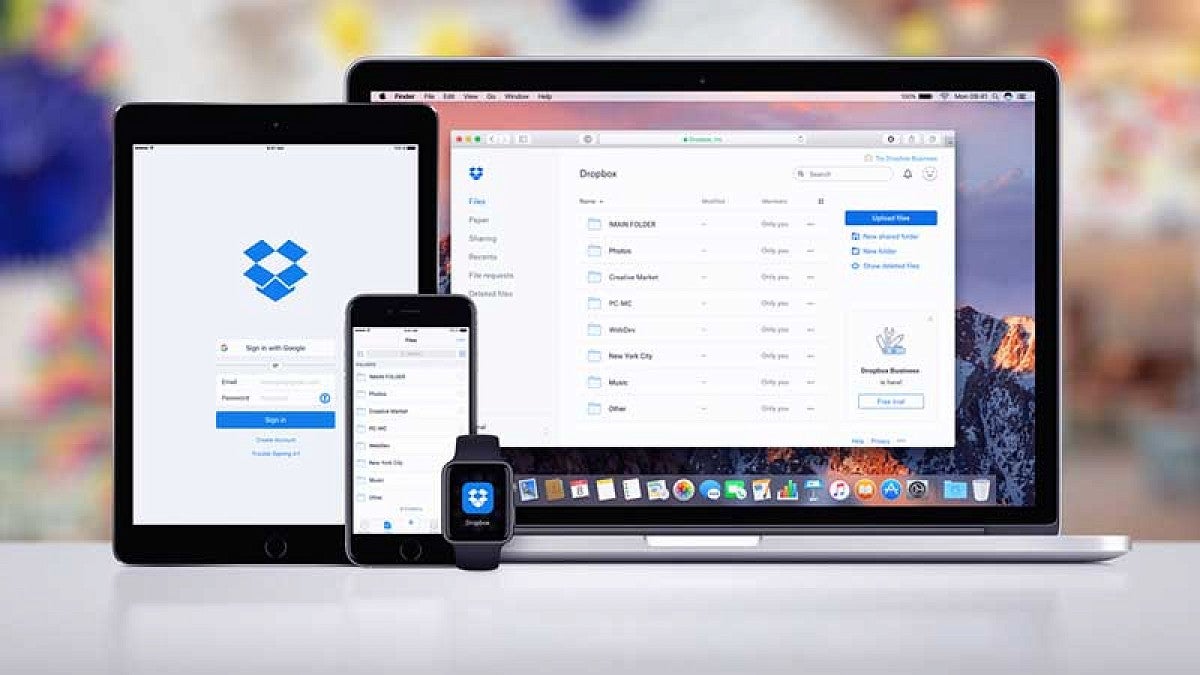The Dropbox file storage service is now available to University of Oregon staff and faculty members.
The cloud-based service allows people to easily sync files between their computers and the cloud and to share files with others.
"As the possible impacts of the COVID-19 outbreak emerged in March, our top priority was getting Zoom up and running to support remote education," said Jessie Minton, vice provost for information services and chief information officer. "But as we anticipated a broad shift to remote work, Dropbox was also prioritized as a secure option for people to move their files to the cloud."
President Michael H. Schill announced on March 19 that the UO would provide remote education for the entire spring term in response to the coronavirus outbreak that is accelerating in Oregon and nationally. On March 16, most UO employees were directed to begin working remotely.
Contract negotiations with both Dropbox and Zoom were already underway in late winter as part of the communications and collaborative technologies program, formerly referred to as unified communications.
"Faculty need this tool to collaborate with other research groups across universities. Dropbox is the most common tool for that," said Matt Riley, chief technology officer, noting that many people were already using it through personal or small-group accounts.
Providing Dropbox as a universitywide service not only expands access but also offers greater data security, including compliance with the Family Educational Rights and Privacy Act of 1974, the federal law protecting student records known as FERPA.
"Our negotiations with Dropbox have ensured UO's data will be stored only in the United States, which isn't standard for them," Minton said. "That was key for meeting federal export control requirements for UO researchers and adds extra protection for student records, beyond what's required."
Dropbox allows users to store files in the cloud, access them from multiple devices and through web browsers, and share them with collaborators both inside and outside the university.
Installing the Dropbox desktop application on a computer creates a Dropbox folder that looks just like a conventional Finder window on macOS or Explorer window on Windows. However, the files in that folder automatically sync to the user's Dropbox account in the cloud. Employees whose UO computers are managed by IT staff in their respective units should contact those staff before installing the Dropbox application.
An array of how-to articles, including a getting started page, are available in the UO Service Portal. Dropbox also offers video tutorials, live training webinars and how-to articles online.
Starting March 27, UO employees with existing Dropbox accounts associated with uoregon.edu email addresses may have seen an invitation from Dropbox to transition their account into the "University of Oregon team." For now, users can choose to either join the UO Dropbox team or ignore the invitation. Those who join will receive a refund from Dropbox for the remainder of their existing subscriptions.
In the future, Information Services may require such users to decide between joining the UO service and changing the email address associated with their Dropbox account.
UO groups with existing Dropbox enterprise accounts should submit a help request through the Dropbox support page in the UO Service Portal before attempting to transition any accounts.
"Just as with Zoom, our solid foundation of prior campus engagement around collaboration tools allowed us to make Dropbox available to faculty and staff before spring term, thanks to additional heroic efforts from our information technology staff," Minton said.
Students will gain access to Dropbox in the coming weeks. Dropbox joins Zoom as the newest collaboration tools available at the university.
Microsoft OneDrive continues to be available as the cloud storage option that integrates natively with the Microsoft Office apps. All UO students, staff and faculty members have access to OneDrive through UO's Office 365 platform, which also complies with FERPA.
For help with Dropbox, staff and faculty members should contact IT staff in their respective units, if available, or the Technology Service Desk, or they should visit the Dropbox support page in the UO Service Portal.
—By Nancy Novitski, University Communications


